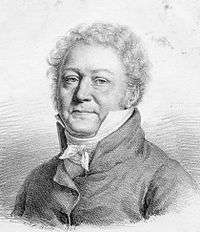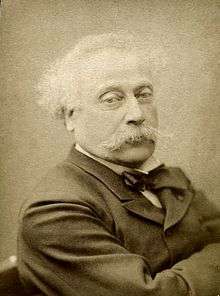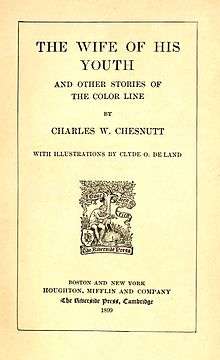Quadroon

Historically in the context of slave societies of the Americas, a quadroon or quarteron was a person with one quarter African and three quarters European ancestry (or in the context of Australia, one quarter aboriginal ancestry). The terms are now archaic.
Similar classifications were octoroon for one eighth black (Latin root octo-, means "eight") and hexadecaroon for one sixteenth black.
Governments incorporated the terms in law defining rights and restrictions. The use of such terminology is a characteristic of hypodescent, which is the practice within a society of assigning children of mixed unions to the ethnic group which is perceived by the dominant group as being subordinate.[1] The racial designations refer specifically to the number of full-blooded African ancestors or equivalent, emphasizing the quantitative least, with quadroon signifying that a person has one-quarter black ancestry.
Etymology
The word quadroon was borrowed from the French quarteron and the Spanish cuarterón, both of which have their root in the Latin quartus, meaning "one quarter", i.e. one-fourth.
Similarly the Spanish cognate cuarterón is sometimes used to describe someone whose racial origin is three-quarters White and one-quarter Indian, especially in Caribbean South America.[2]
Racial classifications
Quadroon was used to designate a person of one-quarter African/Aboriginal ancestry, that is one biracial parent (African/Aboriginal and Caucasian) and one White or European parent; in other words, one African/Aboriginal grandparent and three White or European grandparents.[3] In Latin America, which had a variety of terms for racial groups, some terms for quadroons were morisco or chino, see casta.
The term mulatto was used to designate a person who was biracial, with one pure black parent and one pure white parent, or a person whose parents are both Mulatto.[3] In some cases, it became a general term to refer to all persons of mixed race.
The term octoroon referred to a person with one-eighth African/Aboriginal ancestry;[4] that is, someone with family heritage of one biracial grandparent; in other words, one African great-grandparent and seven European great-grandparents. As with the use of quadroon, this word was applied to a limited extent in Australia for those of one-eighth Aboriginal ancestry, as the government implemented assimilation policies on the Stolen generation.
Terceron was a term synonymous with octoroon, derived from being three generations of descent from an African ancestor (great-grandparent).[5] The term mustee was also used to refer to a person with one-eighth African ancestry.
The term sacatra was used to refer to one who was seven-eighths black or African and one-eighth white or European (i.e. an individual with one black and one griffe parent or one white great-grandparent).[6]
The term mustefino refers to a person with one-sixteenth African ancestry.[3] The terms quintroon or hexadecaroon were also used.
_-_Google_Art_Project_2.jpg)

In the French Antilles, the following terms were used[7][8][9] during the 18th century:
| Black ancestry | Saint-Domingue | Guadeloupe/Martinique |
| 7/8 | Sacatra | - |
| 3/4 | Griffe | Capre |
| 5/8 | Marabou | - |
| 1/2 | Mulâtre | Mulâtre |
| 1/4 | Quarteron | Métis |
| 1/8 | Métis | Quarteron |
| 1/16 | Mamelouk | Mamelouk |
| 1/32 | Quarteronné | - |
| 1/64 | Sang-mêlé | - |
In Latin America, the terms griffe or sambo were sometimes used for an individual of three-quarters black parentage, i.e. the child of a Mulatto parent and a fully black parent.[3]
Favouritism
During the antebellum period, abolitionists featured mulattoes and other light-skinned former slaves in public lectures in the North, to arouse public sentiments against slavery by showing Northerners slaves who were visually indistinguishable from them, preventing them from putting the people in the category of "other".[10]
In literature and pop culture
The colonization of the West Indies by the British, and the establishment of an African slave population there, resulted in fictional characters described as "mulatto", "quadroon", or "octoroon", in several 19th century English novels:
- Sanditon (1817), an unfinished novel by Jane Austen. Miss Lambe is a rich young woman from the West Indies, described as "about seventeen, half mulatto", i.e. a quadroon.
- Vanity Fair (1848), by William Makepeace Thackeray. Miss Rhoda Swartz ("Swartz" is a play on "swarthy", i.e., dark or black) is described as "a rich woolly-haired mulatto" from the West Indies, whose father was a German Jew. Her appearance is mocked behind her back by her acquaintances in England, but her wealth makes her a prize in the marriage market of upper-class society, and she is eventually married to "a young sprig of Scotch nobility".
The figure of the "tragic octoroon" or "tragic mulatto" became a stock character of abolitionist literature in the antebellum era:
- Beginning in 1836 with the first American anti-slavery novel, Richard Hildreth's The Slave,
- Harriet Beecher Stowe's bestselling 1852 novel Uncle Tom's Cabin,
- The extremely popular 1859 play by Dion Boucicault, The Octoroon.[11]
Stereotypically, a light-skinned woman is raised as a white woman in her father's household, until his bankruptcy or death leaves her reduced to a menial position or even sold into slavery.[12] In some cases, she may be unaware of her full ancestry before being reduced to victimization, as in:
- Lydia Maria Child's short story, The Quadroons.[13] This stock character allowed abolitionists to reveal the sexual exploitation prevalent in slavery.
In the period after the American Civil War, Southerners also began writing about people of mixed race, as a way to explore the many contradictions in a postwar society based on a binary division of race. The topic continues to be a means to explore race in society. Authors in the early 20th century were writing against a background of legal racial segregation and disfranchisement in the South; the successes of the civil rights movement have not solved all problems. Authors in the 21st century are writing historical novels set in the 19th century that explore racial permutations.
- The heroine of James Fenimore Cooper's 1826 novel The Last of the Mohicans, Cora, is the daughter of a quadroon or octoroon woman who married Cora's father, Lt. Colonel Munro. Col. Munro describes Cora's mother as "descended, remotely, from that unfortunate class who are so basely enslaved to administer to the wants of a luxurious people." When Col. Munro believes that a suitor, Duncan Heyward, has rejected Cora because of her mixed-race heritage, he chastises the young man: "You cast it on my child as a reproach! You scorn to mingle the blood of the Heywards with one so degraded — lovely and virtuous though she be?" Heyward assures Cora's father that this is not so ("Heaven protect me from a prejudice so unworthy of my reason!"), but inside he was "conscious of such a feeling, and that as deeply rooted as if it had been ingrafted in his nature."
- Richard Hildreth's 1836 novel The Slave; or, Memoirs of Archy Moore ("almost certainly the first anti-slavery novel published in America") is narrated by slave Archy Moore (mulatto son of his owner, Colonel Moore) who marries a light-skinned slave, Cassy, sexually pursued by slave owners[14]
- Lydia Maria Child's 1842 short story The Quadroons was printed in the abolitionist anthology The Liberty Bell
- Henry Wadsworth Longfellow's 1842 poem, The Quadroon Girl, has a planter knowingly selling his quadroon daughter to a slaver to be his sexual slave.
- Uncle Tom's Cabin (1852), a novel by Harriet Beecher Stowe, described Eliza and her son Harry as quadroons. As Harry's father was described as a mulatto, Harry would have somewhat more than a quarter African ancestry.
- Walt Whitman's 1855 poem Song of Myself refers to a "quadroon girl" who is sold at a slave auction.
- The Quadroon (1856) is a novel by Thomas Mayne Reid.
- The Octoroon, a play by Dion Boucicault adapted from Reid's The Quadroon, was first performed at New York City’s Winter Garden on December 12, 1859. The play describes the suffering by Zoe, an octoroon who learns about her African ancestry, which disrupts her life plans.
- In Little Men (1868-1869), a novel by Louisa M. Alcott, Mr and Mrs Bhaer accept a quadroon boy to their school.
- George Washington Cable wrote about the Louisiana Creoles of mixed-race heritage; he explored issues for mixed-race mothers who had daughters with white men, and denied their parenthood to enable their light-skinned daughters to pass into the dominant white world in the post-war South. His most important works are Old Creole Days (1879), The Grandissimes (1880), and Madame Delphine (1881).
- In The Awakening (1899) by Kate Chopin, Pontellier's nurse is described as a quadroon.
- Désirée’s Baby (1893), a short story by Kate Chopin, features an apparently quadroon child born to two white parents; as the mother was adopted, the father assumes she has African ancestry and rejects her. He later burns a letter from his own mother; the reader learns that she was telling of her mixed-race ancestry.
- Charles W. Chesnutt wrote some stories and novels featuring characters of mixed race and issues of the color line in the period following the American Civil War, such as The Wife of His Youth and Other Stories of the Color-Line (1899) and The House Behind the Cedars (1900).
 The Wife of His Youth and Other Stories of the Color Line, 1899, by Charles W. Chesnutt
The Wife of His Youth and Other Stories of the Color Line, 1899, by Charles W. Chesnutt
20th-century to present
- The titular character of James Weldon Johnson's book The Autobiography of an Ex-Colored Man (1912/1927) is a man of mixed race who can (and does) decide to pass for white.
- The Octoroon (1913) an American drama film produced by the Vitagraph Company.
- Aldous Huxley's Brave New World (1931) included some lower-caste social members described as octoroons.
- In William Faulkner's novel Absalom, Absalom! (1936), Charles Bon, himself with an unspecified portion of black ancestry, had a son by his octoroon mistress in the 19th century.
- Robert Penn Warren's 1955 novel Band of Angels deals with the theme of the seemingly white young woman who learns only after her father's death that she is the daughter of one of his slaves and will be sold to pay his debts.
- Anne Rice's novel The Feast of All Saints (1979) features the gens de couleur libres, "free people of color" in New Orleans before the Civil War. Her three novels in the series, Lives of the Mayfair Witches (1990 to 1994), also refer to mulatto and quadroon people in late 19th and early 20th-century New Orleans. The city had a high proportion of mixed-race people.
- In Love in the Time of Cholera (1985/1988 in English), by Gabriel Garcia Marquez and set during slavery time in Colombia, Florentino Ariza's mother Transito is described as a "freed quadroon".
- Benjamin January/Janvier is a free man of color and the main character in Barbara Hambly's historical mystery series set in and around 1830s New Orleans; he is described as a griffe. Hambly's novels, published from 1997 to 2013, explores the city's complex caste system and the severe legal and social restrictions placed on people of color.
- A scene in Rabbit-Proof Fence features an Australian government official explaining the government's plan to breed Aboriginal children with white people to erase the Aboriginal ancestry. He uses the words quadroon and octoroon.
- In Island Beneath the Sea (2009), a novel set in late 18th-early 19th century Saint-Domingue (Haiti) by Isabel Allende, the main character's daughter Rosette, is a quadroon. Her mother is a free woman of color and former slave, and her father is a white Frenchman.
- In Archer, an animated comedy series on FX created by Adam Reed, the main character, Archer, refers to mentioning the word "quadroon" to his co-worker, Lana, in the past, and her "freaking out". The term is also used by a female character in the show, Pam, when talking about Lana's daughter, who is of mixed race. Archer himself describes their daughter as potentially being an octoroon in the third episode of Season 7.
- In Barkley, Shut Up and Jam: Gaiden, the character Balthios James, great-grandson of NBA player LeBron James, is referred to as an octoroon.
- In "Key and Peele", a comedic sketch show starring a duo of comedians Keegan-Michael Key and Jordan Peele, in the Obama Meet and Greet sketch, Peele (who is portraying Obama) refers to one of his supporters as an octoroon when greeting him.
- A scene in Season 4 Episode 13 of How to Get Away With Murder, Viola Davis' character (Annelise Keating), refers to mentioning the word "quadroon" and "octoroon" in her epic speech during her class-action lawsuit against the city to the Supreme Court judges.
See also
References
- ↑ Kottak, Conrad Phillip. "Chapter 11: Ethnicity and Race," Mirror for Humanity a Concise Introduction to Cultural Anthropology. New York, NY: McGraw-Hill, 2009. 238. Print.
- ↑ "Definition". dle.rae.es.
- 1 2 3 4 Carter G. Woodson and Charles H. Wesley, The Story of the Negro Retold, (Wildside Press, LLC, 2008), p. 44: The mulatto was the offspring of a white and a black person; the sambo of a mulatto and a black. From the mulatto and a white came the quadroon and from the quadroon and a white the mustee. The child of a mustee and a white person was called the mustefino.
- ↑ Princeton University WordNet Search: octoroon
- ↑

- ↑ "Quadroons, Octoroons, Sacatra, and Griffe".
- ↑ Frédéric Regent, Esclavage, métissage et liberté, Grasset, 2004, p.14
- ↑ Gérard Etienne, François Soeler, La femme noire dans le discours littéraire haïtien: éléments d'anthroposémiologie, Balzac-Le Griot, 1998, p.27
- ↑ Regent Frédéric, « Structures familiales et stratégies matrimoniales des libres de couleur en Guadeloupe au XVIIIe siècle », Annales de démographie historique 2/2011 (n° 122), p. 69–98
- ↑ Lawrence R. Tenzer, "White Slaves Archived 2011-11-09 at the Wayback Machine."
- ↑ Zanger, Jules (Spring 1966). "The "Tragic Octoroon" In Pre-Civil War Fiction". American Quarterly. 18 (1): 63–70. doi:10.2307/2711111. JSTOR 2711111.
- ↑ Ariela J. Gross, What Blood Won't Tell: A History of Race on Trial in America, p. 61 ISBN 978-0-674-03130-2
- ↑ Kathy Davis. "Headnote to Lydia Maria Child's 'The Quadroons' and 'Slavery's Pleasant Homes'."
- ↑ Railton, Stephen. "Richard Hildreth's Slave". Uncle Tom's Cabin & American Culture. University of Virginia. Retrieved 4 August 2014.